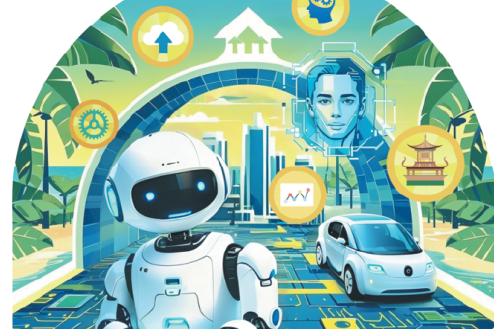How AI threatens linguistic diversity


Cultural diversity and biodiversity are often discussed in parallel, and for good reason. Both are invaluable to the richness and sustainability of life on Earth. Just as we must take action to preserve the vast variety of species that inhabit our planet, we must also protect the diversity of cultures that shape the human experience.
In this context, the plurality of languages plays a critical role in nurturing and maintaining cultural diversity. Language is not just a tool for communication; it is a vehicle for the transmission of knowledge, traditions, values and worldviews. However, despite their immense practical value, large language models (LLMs) are exacerbating the pressure on non-English languages, contributing to a subtle but significant decline in linguistic diversity.
Cultural diversity is deeply intertwined with linguistic diversity. Every language carries within it a unique set of ideas, ways of thinking, and forms of expression. When a language fades, so does the cultural knowledge it embodies. Linguistic diversity helps societies address and adapt to challenges and innovate in ways that might otherwise be impossible. Just as ecosystems thrive when diverse species coexist, societies become more resilient and dynamic when diverse cultures and languages flourish. The loss of a language is not just the loss of words, but the sad erosion of one particular vision of the world.
In the global village shaped by the influence of the United States, the rise of English as the dominant language in business, technology and academia has created a significant imbalance. While the proliferation of English has brought people together across borders, it has also placed enormous pressure on the survival of local languages. This phenomenon is especially visible in cyberspace, where English has become the lingua franca — 52.1 percent of websites are currently in English. Spanish comes second, accounting for only 5.5 percent.
Large language models are contributing to this trend in both subtle and overt ways. This applies not only to already endangered languages (more than 3,000 of them) but also to more stable ones (more than 3,500). Among the latter, it even affects the most widely spoken languages worldwide, such as Chinese, Hindi, Spanish and French.
The message is clear: passively allowing linguistic homogenization to occur and become the norm is unwise.
LLMs are designed to process vast amounts of data from the internet, and this data is overwhelmingly in English. Although these models are capable of understanding and generating text in many languages, they are predominantly trained on English-language content. This structural bias toward English reinforces the dominance of the language. The increasing reliance on LLMs in applications like translation, customer service and content creation further consolidates the centrality of English.
While AI bias is a widely discussed issue, particularly in terms of race, gender and socioeconomic status, the impact of large language models on linguistic diversity deserves more attention. In fact, it may be one of the most pressing issues for the future of cultural diversity. The widespread use of English in AI systems risks marginalizing minority languages and expediting their extinction. As more people rely on AI for communication, learning and business, they may inadvertently reinforce the dominance of English at the expense of their native tongues.
This issue is compounded by the fact that the development of AI technologies is often driven by countries and companies in the English-speaking world. As a result, the tools designed to aid human communication are often created with little consideration for the preservation of linguistic diversity. While some AI developers are working on making their systems more inclusive, the challenge of supporting hundreds of languages, each with its own unique grammar and cultural context, is formidable.
Raising people's awareness of the impact of LLMs on linguistic diversity is crucial for fostering a true sense of cultural preservation. Just as biodiversity is not just about saving individual species but maintaining the intricate web of life that sustains ecosystems, cultural diversity is about protecting the multitude of human experiences that contribute to the global mosaic of human identity. As we continue to advance in the field of AI, it is essential to incorporate the values of linguistic diversity and cultural inclusion into the design and deployment of these technologies.
The conversation on AI's impact on language and culture must be global. Governments, tech companies and linguists must collaborate to ensure AI serves as a tool for promoting, rather than diminishing, cultural and linguistic diversity. By making concerted efforts to develop technologies that support the vitality of all languages, we can help safeguard the rich diversity of human cultures for future generations. This makes the preservation of linguistic diversity not just an academic issue, but also a cultural imperative that is essential to the flourishing of human civilization.
The author is the founder of the China-Europe-America Global Initiative, editor of China and the World in three volumes, and the creator of the Inspiring Series, a collection of books that aims to introduce China to the world.
The view don't necessarily reflect those of China Daily.
If you have a specific expertise, or would like to share your thought about our stories, then send us your writings at opinion@chinadaily.com.cn, and comment@chinadaily.com.cn.
































